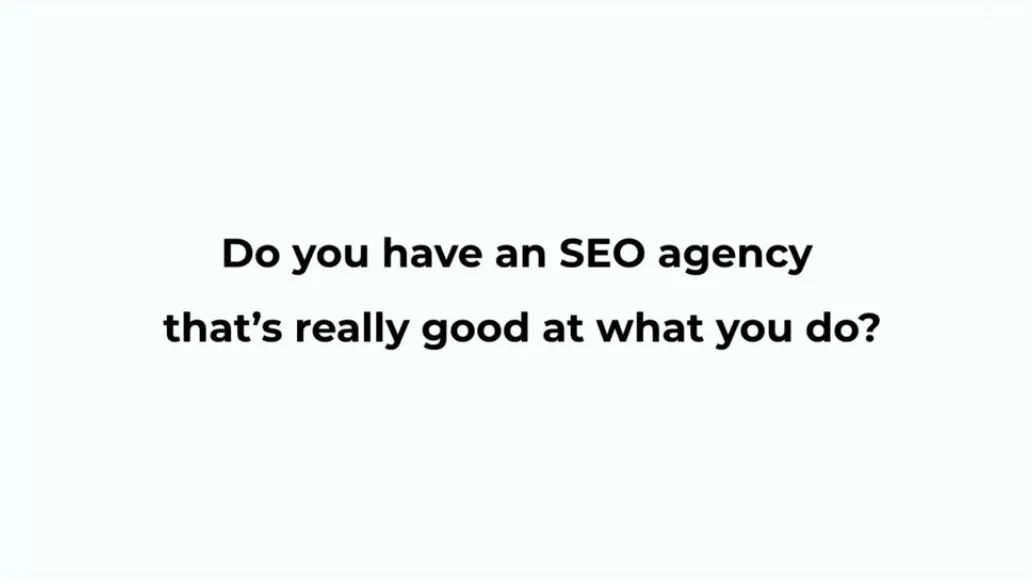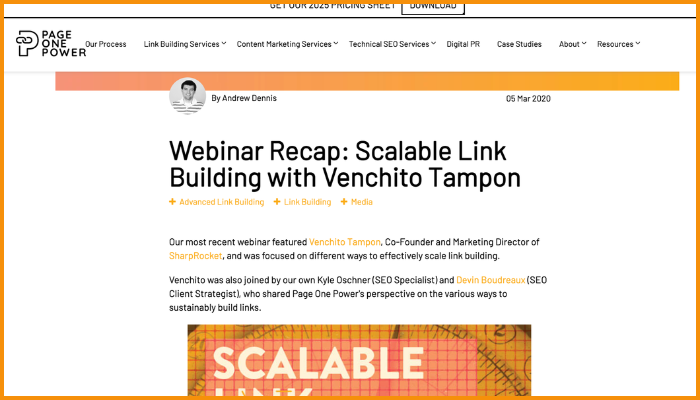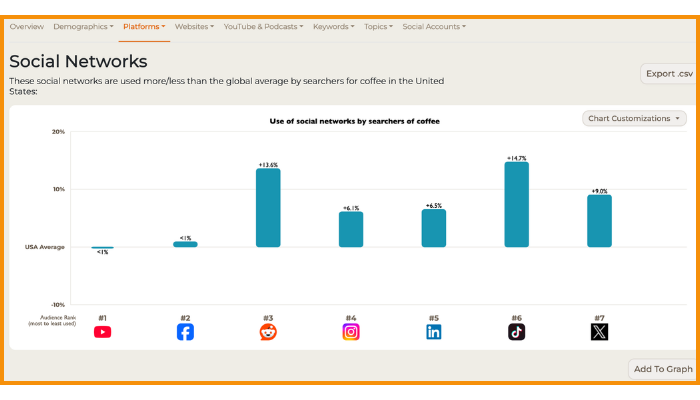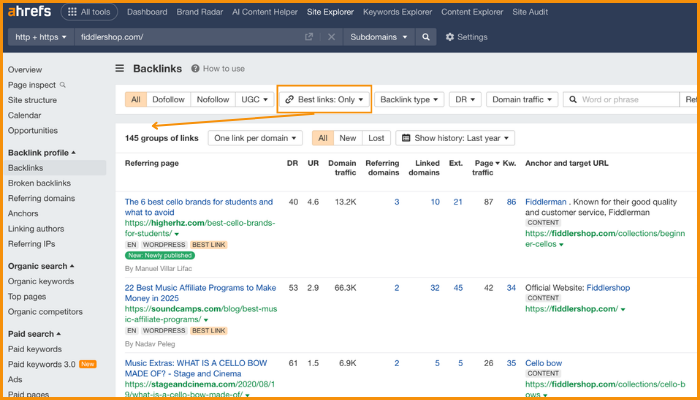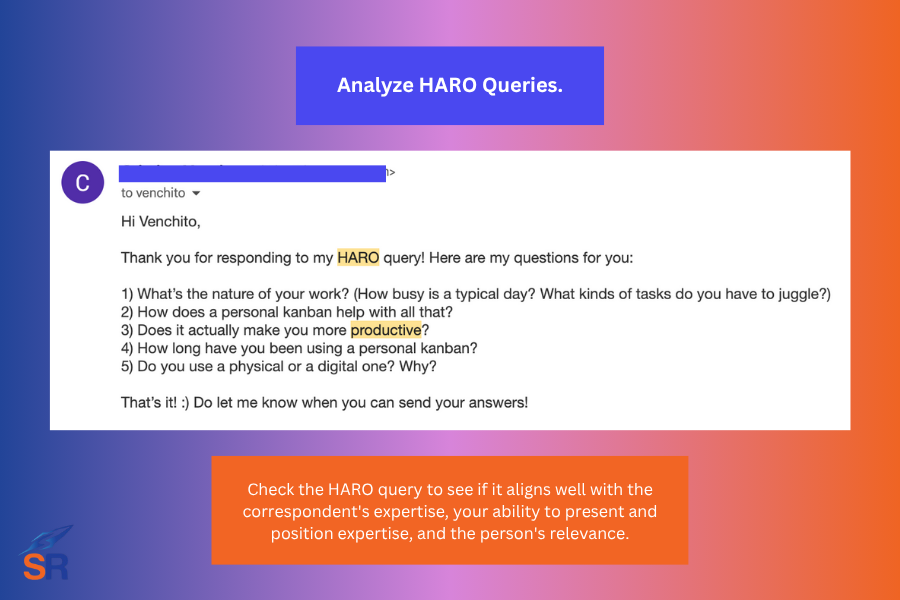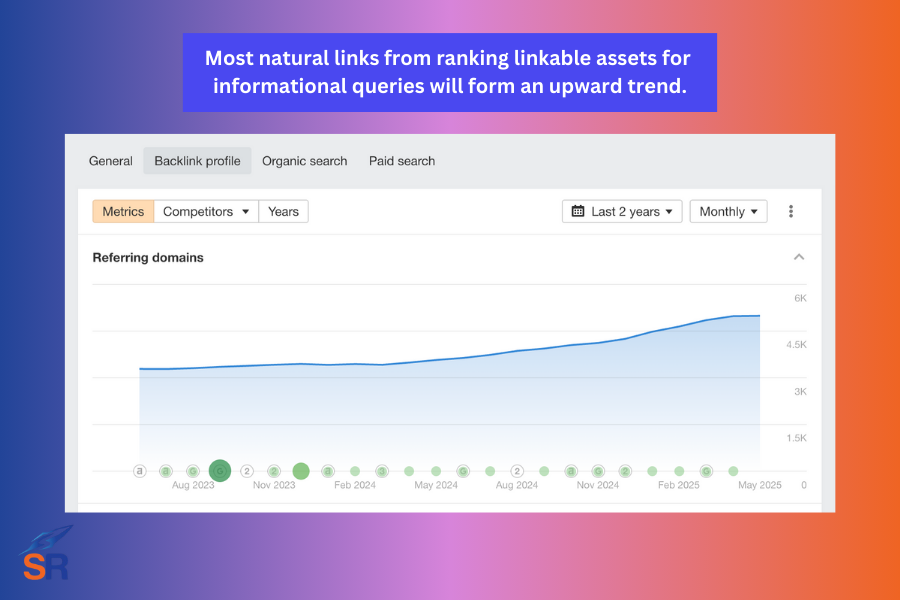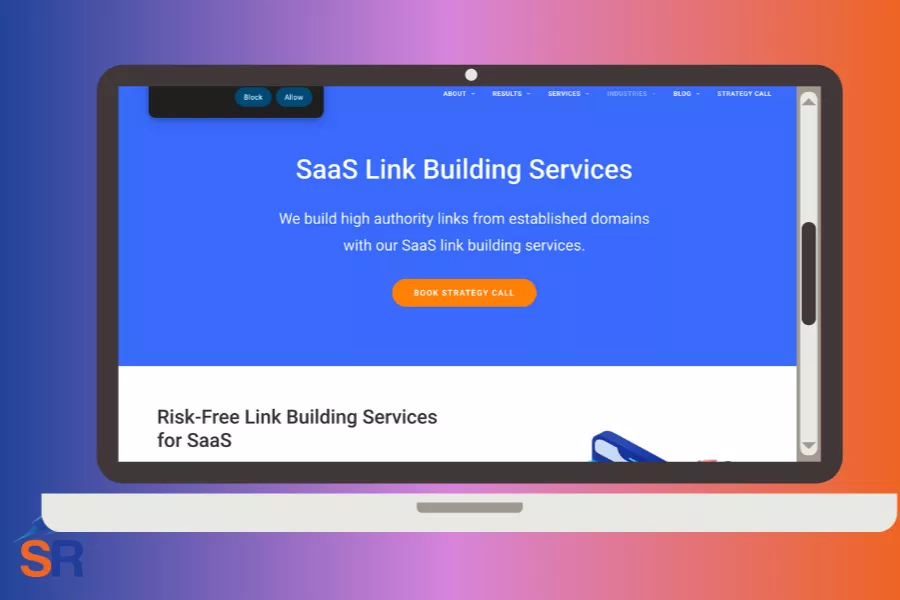SEO outreach remains a vital part of any link acquisition campaign. In this phase, content publishers reach out to webmasters and persuade them with the right proposition to accumulate backlinks for their sites.
As we know, the practice has been abused, leading many editors and webmasters to significantly increase their editorial standards, making it more difficult for any outside contributor to place content on their blogs.
We still believe there’s a better way of doing SEO outreach as a link building agency. This belief has led us to where we are, as we constantly improve our outreach efforts to help our clients reach new audiences and improve their branding efforts for their products or services.
Beyond its objective to acquire links, SEO outreach takes many advantages for the brand, to name a few:
- It establishes your brand as an authority in your space, given the value you provide in the form of content assets that could prove your experience and expertise.
- It helps informational content (with the intent to earn more natural links) get the top spots in Google’s SERPs (as you need a higher position for your target keyword for other content publishers to notice and provide you with links).
- It connects you to other content publishers, journalists, and industry influencers who are likely to help amplify your brand further through their content distribution and social media marketing initiatives.
As we’ve established the importance of SEO outreach, let’s look at the best practices that separate successful outreach campaigns from mediocre ones.
Contents
Toggle1. Reach Out to Prospects with Higher Link Obtainability
Simply going through the motion of sending outreach emails with hopes of securing a single link isn’t a good idea. Assessing how easily a link could be obtained from a website or page is the key to ensuring you’ll have backlinks at the end of the email.
Put enough effort into understanding whether or not you’ll get a backlink from a website. The way to know that is by aligning your current value proposition with the site’s needs and preferences.
For instance, if you’re proposing a piece of content (blog post, infographic, data survey, brand stories, etc.) to a publisher, see if it taps into the needs of their audience (relevance).
If you’re considering a link inclusion, see external links on the list and match them to the page you want included. If they only list links to suppliers and retailers, will your product/product category page be considered?
Another element of backlink obtainability is page updates, which refer to how frequently and recently the page is updated to satisfy its users. You can check using Archive.org to see its recent versions, or if you’re doing competitor analysis, Ahrefs has this feature for you to check page updates.
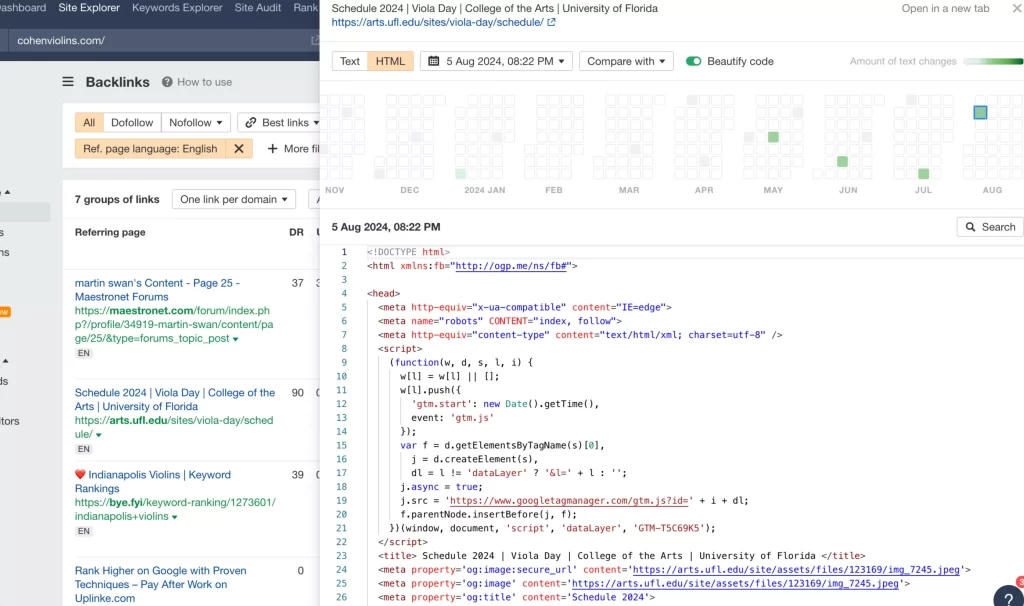
The more recently the page has been updated, the more active the webmaster is in managing that specific page, increasing the likelihood of getting a backlink from it through SEO outreach.
2. Demonstrate Credibility
SEO outreach campaigns include sending cold emails to publishers and editors you may not have known. Establishing credibility during your initial emails is critically important to differentiate yourself from others pitching the same editor.
Start demonstrating credibility using credible email accounts – preferably corporate emails with your account signature.
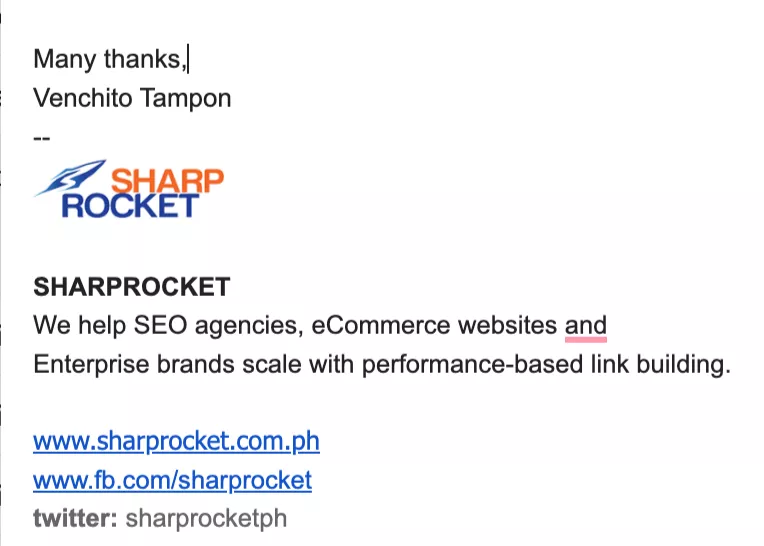
Editors can glance at your email signature and initially trust that your email is coming from a real author, not somebody just aiming to have a link on their site. It may sound simple, but thousands of outreach pitches fail to include a credible email signature in their emails.
Another way to establish credibility up front is to provide social proof of work. For instance, if you’re proposing to get a link to your web product from an article they recently wrote, you may include companies that utilized the tool and a quick description of the results they achieved to establish product authority.
3. Write Shorter Emails
Contrary to what others have written, where they state that you literally have to personalize everything in your first-touch email, the truth is writing shorter emails for initial contact tends to get better response rates.
The reason is that emails that are concise (shorter) and demonstrate the unique value proposition using the first few lines help capture attention better and pique the curiosity of anyone who reads them.
As you get a response from your link prospects, you can now send a more thorough email incorporating the needed details, i.e. specialized topics for content pieces.
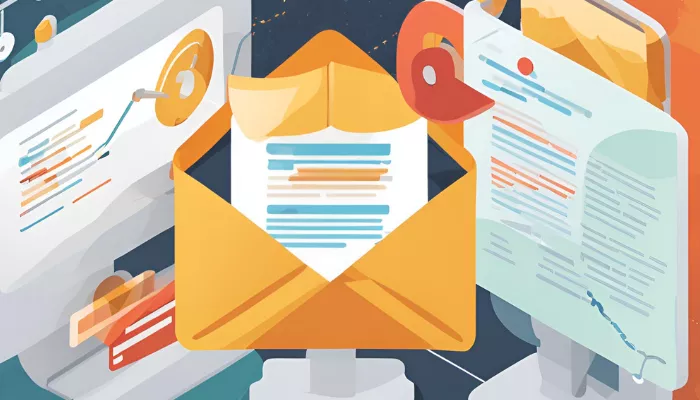
Writing shorter emails also saves time and improves the efficiency of your outreach, allowing you to send more qualified emails down the line.
Essentially, your short email must include the name, website/brand you’re reaching out to, and a quick description of your value proposition (e.g., premium access to your tool, product review, digital PR story, etc..).
4. Exchange Contacts with Reputable Publishers
One investment you can make is building relationships with active content publishers in your industry who’ve written content for other related sites.
From this relationship-building strategy, you can ask if they know of any industry-related publication you can propose content to. Pass on contacts with each other and increase both parties’ networks.
The upside with referrals like this is they can make an introduction to you as an author, which initially builds trust (as it comes from someone the publishers are already familiar with) – allowing you to advance your content pitch opportunity further down the line.
One of the best ways to widen your publishers’ networks is to get on the radar in online communities. Be active in answering questions on forums, Linkedin, and niche communities to increase familiarity about you as an author. This way, when you reach out as an outside contributor, there’s a brand recall of your personality.
5. Leverage Reverse SEO Outreach
Reverse SEO outreach attracts potential link partners who are actively seeking content opportunities for their sites. It helps diversify your link building strategy beyond just doing manual outreach to get backlink opportunities.
You utilize the power of ranking pages for other active content publishers to find you through queries such as:
- Keyword + “write for us”
- Keyword + “become a contributor”
- Keyword + “guest post by”
- Keyword + “contribute to”
- Keyword + inurl:”contribute”
- Keyword + “submit a guest post”
- Keyword + “submit an article”
This strategy lets prospects come to you so you can assess their websites to see if it’s worth having a content partnership with them (both sites get reciprocal links or use other niche-relevant sites to exchange relevant links).
As mentioned earlier, it also offers an opportunity to be introduced to their contacts, which helps expand your networks.
6. Offer to Update Content
Link bulding isn’t only confined to getting links from new content. Older pages could be great opportunities to provide robust link juice to your pages, given that these pages have significant page authority to power up your links.
Identify outdated content in your list of blogs. You can quickly search for relevant published content on a specific domain (site search operator) or use Ahrefs to find best-performing content that needs updates to better satisfy users.
7. Put Timing to Your Emails
Sending emails just at the right time helps increase open and link placement rates.
Siegemedia created a study of over 85,000 personalized emails and found that the best time to send cold emails is between 6-9 a.m. PST on Monday, with Tuesday being a close second.
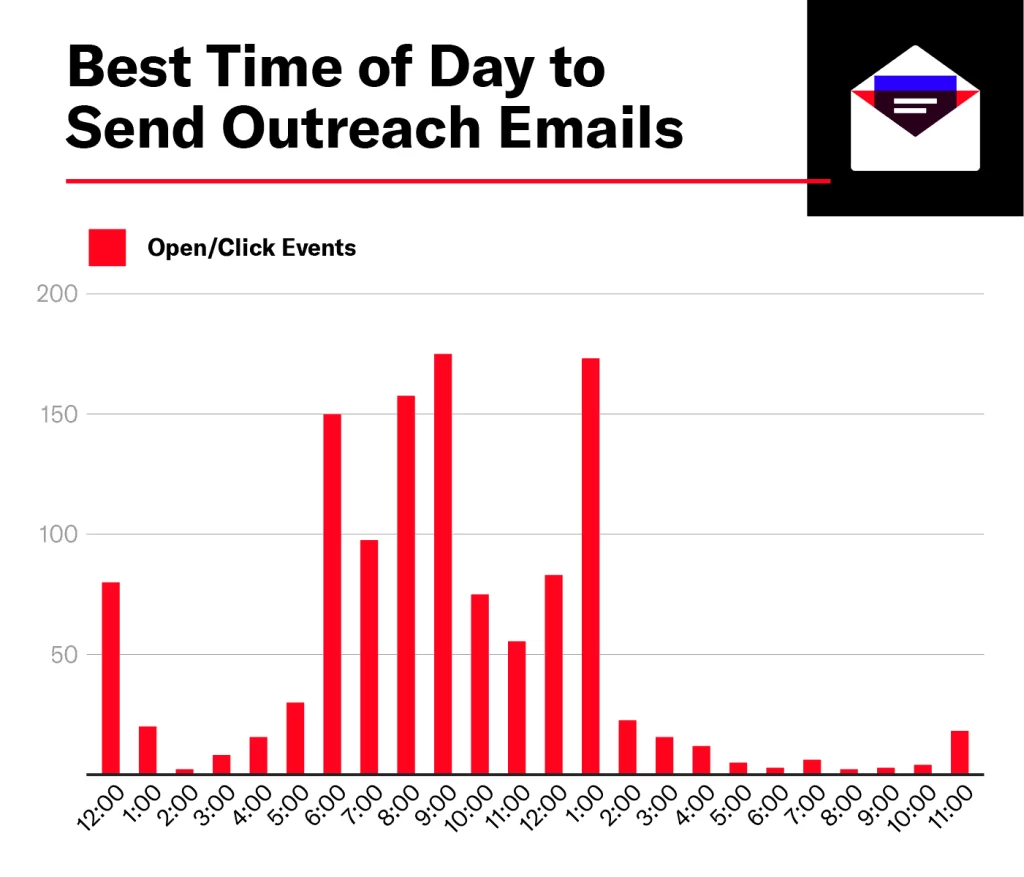
When people read your emails before they go about their day (or at least before they start getting busy), they’re more likely to respond quickly.
Optimizing your link outreach campaigns based on the best day and time to send emails can help turn an average outreach result into a successful one.
8. Always Follow Up On Your Pitch
One of the most apparent yet underutilized outreach tactics is sending follow-ups. While it is the simplest thing to do, not doing so could prevent you from landing a backlink from a reputable publication.
A good rule of thumb is to wait at least 72 hours (3 days) after sending the first email to follow up. This gives an allowance of time for your target prospect to respond before sending another.
Too much aggressiveness in follow-up could be a nuisance.
9. Use Variety in Outreach Angles and Email Accounts
Invest time sending emails using different outreach angles to test which best resonates with your audience. Other target groups may have different receptions for emails, so having two to three emails with varying outreach angles can significantly impact your SEO outreach’s performance.
When doing A/B testing, it’s essential to make minor changes slowly to avoid inconsistent results that run away from the primary email. Aggressive changes will not help you see any improvement in modifying your email outreach copies.
Try other outreach tactics besides the typical guest blogging and broken link building methods. Consider ways that lean toward building long-term relationships (e.g., content partnerships). You might not get links in the first conversation, but it can help bring awareness to your authorship and provide more long-term content opportunities.
Contextualize Your Outreach Campaigns
While these best practices have proven effective for our team outreach efforts, it is best to test them with your brand’s campaign. Align your campaign’s activities with the context of your audience and the specific value you’re proposing to your potential link partners, as that would help you see improvements in your outreach campaigns.
Written By
Venchito Tampon
CEO and Co-Founder at SharpRocket, a link building agency. With a decade of experience, Venchito has a proven track record of leading hundreds of successful SEO (link builidng) campaigns across competitive industries like finance, B2B, legal, and SaaS. His expert advice as a link building expert has been featured in renowned publications such as Semrush, Ahrefs, Huffington Post and Forbes. He is also an international SEO spoken and has delivered talks in SEO Zraz, Asia Pacific Affiliate Summit in Singapore, and Search Marketing Summit in Sydney, Australia. Check out his other business - Hills & Valleys Cafe.
Reviewed By

Sef Gojo Cruz
COO at SharpRocket, overseeing end-to-end operations, from crafting link building strategies to leading high-performing teams. Previously led SEO initiatives at Workhouse, a digital agency in Australia, and Keymedia, a real estate media company based in New Zealand.
How our LINK BUILDING AGENCY in UK builds 250 links/mo consistently using Predictable Link Building Methodology™…
- Using a SIMPLE and PROVEN system
- Using a SCALABLE strategy
- No private blog networks
- No creepy outreach emails
